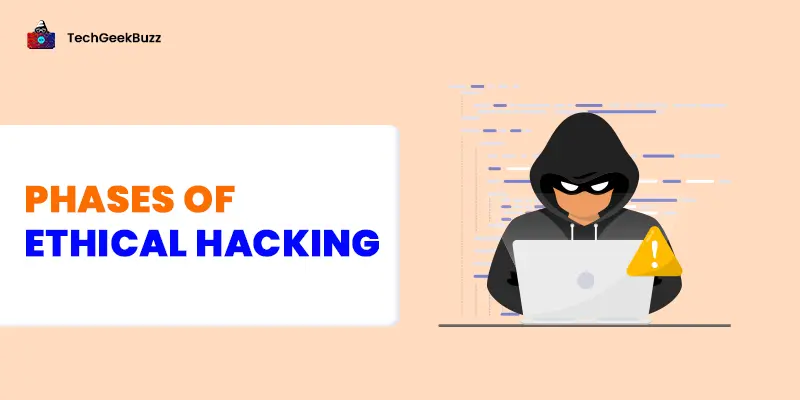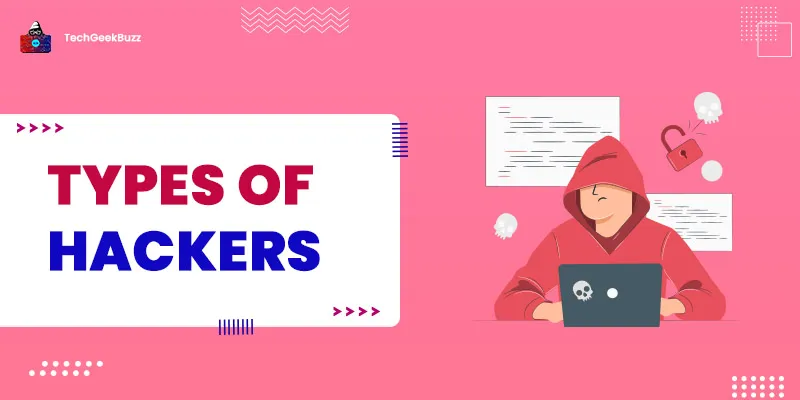When people hear the word "hacker," they often imagine a stereotyped gloomy figure—someone whose face is disguised by a hoodie and who is frantically typing away on a computer or laptop. And although this might be the case for a specialized hacker, it's not necessarily the case for most people who use that name.
Moreover, many people think of a hacker as a person with the malicious intent of stealing or damaging data. Those are black hat hackers, while hackers who break into systems or networks legitimately with the aim of identifying security vulnerabilities are white hat hackers.
They utilize their technical skills and abilities to improve the web for corporations and individuals. Also, they serve as a defense against black hat hackers. However, you'll find them working in I.T. and cybersecurity teams or providing advisory services to companies worldwide rather than wearing spandex and a cape.
If you are curious to know more about this type of hacker, continue reading this article, as it provides you with everything about white hat hackers.
What is a White Hat Hacker?
A white hat hacker, often referred to as an ethical hacker, is a computer security expert who infiltrates networks and systems to test and evaluate their security posture. They do it all legitimately by issuing permission from an authority. To prevent hostile hackers (sometimes called "black hat hackers") from finding and exploiting flaws, ethical hackers employ their skills and the same hacking techniques as black-hat hackers to strengthen security.
White hat hackers frequently work in the shadows, blocking attacks in real-time to protect services and assets from cyberattacks. Additionally, they may concentrate on cyber threat analysis, disclosing flaws to direct and organize the prioritization of vulnerability correction.
However, it is important to note that ethical hackers identify security vulnerabilities in systems or networks only if they are permitted to do so. They reveal all the security flaws to the product owner in charge of fixing those flaws so that threat imposters cannot exploit them.
Why Do We Need White Hat Hackers?
To proactively identify vulnerabilities, white hat hackers typically employ absolute attack methods. The best way to evaluate the efficacy of security defenses is to use basic attack strategies. They deploy various techniques, including protocol spoofing, endpoint vulnerability exploitation, social engineering, and more.
White hat hackers spend time with a particular organization and understand its security system. It is important that the organization employ a good and skilled ethical hacker. They work around the system and assess the threats the organization may face. Also, they address all the possible vulnerabilities that the organization may face. They suggest improvements and reworks that the systems require in order to avoid any sort of attack and keep the environment safe.
Difference between White Hat Hacker, Black Hat Hacker, and Gray Hat Hacker
The idea of categorizing hackers according to their intents is where the concept of the various colored hacker "hats" - white hat, grey hat, and black hat (good, evil, or a mix of the two) - originated. Initially, there were three distinct categories of hackers: white, black, and grey hats. Let us understand how these three categories of hackers differ from each other.
- White Hat Hacker
An expert in computer security known as a "white hat hacker" utilizes penetration testing techniques to protect a company's networks and information system assets from potential threats. They are commonly known as ethical hackers. Before black hat hackers find vulnerabilities, white hat hackers collaborate with information technology and network operations teams to patch them. They work with the organization's approval and within their established confines.
- Black Hat Hacker
A black hat hacker looks for computer security bugs and tries to exploit them for their advantage or malicious purposes. They are in complete contrast to ethical hackers. As ethical hackers disclose security vulnerabilities to the product owner or organization, black hat hackers leverage those vulnerabilities and accomplish their malicious intent.
Black hat hackers can seriously harm small businesses and individual computer users by stealing sensitive data, jeopardizing the security of vital systems, or taking down or changing the operation of websites and networks.
- Gray Hat Hacker
The term "grey hat hacker" (sometimes written as "grey hat hacker") refers to someone who, unlike black hat hackers, may violate moral or ethical standards without intending to do harm. They might take part in activities that don't seem to be fully lawful, yet they typically work for the greater good.
Grey hat hackers stand amid black hat hackers, who act intentionally to exploit system weaknesses, and white hat hackers, who work for people responsible for maintaining secure systems.
White Hat Hacking Tools and Techniques
Both white and black hat hackers employ the same hacking methods and tools, especially when conducting external penetration tests (pen tests). White hat hackers, however, aim to assist a company in strengthening its security posture. The following are some typically used techniques and tools:
- Phishing Emails
White hat hackers run simple anti-phishing operations to identify and address potential problems in a company's network before an attack occurs. Email phishing deceives the recipient into clicking on a harmful file or link or disclosing sensitive information.
- Societal Engineering
White hat hackers test the security of a company's systems using behavioral tactics so that the organization can stop an attack. Social engineering attacks take advantage of employee trust and human nature to persuade them to violate security procedures or divulge private data.
- Pen Testing
Ethical hackers employ their knowledge to find potential points of access and weak areas in the system before attempting to get into the company's network or publicly accessible system.
- Security Check
Ethical hackers use various technologies to automate the process of identifying known vulnerabilities. These include open-source pen testing tools like Metasploit Framework or Nikto and web application vulnerability detection tools like Acunetix or Netsparker.
- Denial-of-Service (DoS) Attack
Users cannot access a system or network resource due to this kind of assault, which momentarily interrupts or lowers its performance. An organization can create its DoS response strategy with a white hat hacker who can replicate this kind of attack.
How Can You Become a Certified White Hat Hacker?
The term "Certified Ethical Hacker (CEH)" refers to a training program for infosec experts. This training aims to arm you with the information, equipment, and resources you need to safeguard an organization. In reality, the intelligence services of the United States, the United Kingdom, and other nations recognize it as one of the fundamental certifications. Holders of a CEH certificate must recertify every three years to maintain their status.
Background and Educational Prerequisites
White hat hacking requires a lot of communication and problem-solving abilities. Along with knowledge and common sense, a white hat hacker must have excellent judgment, significant technical and organizational skills, and the capacity to keep it together under pressure.
Every firm is free to set its standards, although a bachelor's or master's degree in information security, computer science, or mathematics offers a solid foundation. There are no universal educational qualifications for ethical hackers.
You can also consider pursuing other certifications and training programs, such as:
- Offensive Security Certified Expert (OSCE)
- Offensive Security Certified Professional (OSCP)
- Certified Register of Ethical Security Testers (CREST)
- Computer Hacking and Forensic Investigator (CHFI)
- Certified Information Systems Security Professional (CISSP)
Technically, everyone who completes the course satisfactorily qualifies as a certified ethical hacker. In contrast, some certified ethical hackers (CEHs) are white hat hackers, but not all CEHs are. This distinction is crucial.
Check out: How to Become an Ethical Hacker?
Legal Issues with White Hat Hacking
Companies hire ethical hackers to perform penetration testing , a method that helps establish the safety of the company's systems. Penetration testing is an essential commercial service. Just think of how a company would find vulnerabilities in its systems and strengthen defenses against real criminals without ethical hackers performing penetration testing.
In spite of this, is ethical hacking moral? Perhaps even more importantly, is ethical hacking even legal?
It depends on the situation whether or not white hat hacking is legal. The organization justifies its hiring of a white hat hacker and its authorization of the hacker to examine the organization's security defenses. Also, one argument is that it is important to check organizations' legal standings.
Companies let ethical hackers access their systems to find areas of vulnerability in their security. Since white hat hacking is carried out for the organization's benefit, the organization disregards the fact that the hackers would have violated numerous laws of the organization's security by doing this. Hackers violate the laws to find the organization's weaknesses and set up a defense against them to protect them from cybercriminals.
Famous White Hat Hackers
Here, we have listed some famous white hat hackers worldwide:
- Tim Berners-Lee
Berners-Lee, who created the World Wide Web, is arguably the name best recognized in software engineering. He currently serves as chairman of the World Wide Web Consortium (W3C), which oversees web development.
- Greg Hoglund
Master of P.C. Legal Sciences Hoglund is well-known for his work and study commitments in rootkits, web game hacking, and malware identification. He formerly held positions with the United States government and the knowledge sector.
- Richard M. Stallman
Stallman is an excellent example of a "hero" programmer and the creator of the GNU project, a free software initiative that expands the possibility of P.C. usage. Stallman founded the free programming movement in the 1980s with the idea that computers might be used to facilitate participation rather than obstruct it.
- Dan Kaminsky
Kaminsky is a well-known network security community and the head researcher at White Ops, a company that uses JavaScript to track malware movement. He gained the most notoriety for discovering a fundamental flaw in the Domain Name System (DNS) convention that would have allowed programmers to launch countless store-harming attacks.
- Jeff Moss
Jeff Moss, a moral programmer, co-led the group's Task Force on CyberSkills while serving on the U.S. Country Security Advisory Council under the Barack Obama administration. Additionally, he founded the developer conferences Black Hat and DEFCON and served as a member of the Global Commission on the Stability of Cyberspace.
Conclusion
White hat hackers or ethical hackers are referred to as the "good people." These individuals are a group of hackers, computer professionals, and penetration testers who safeguard people and companies by identifying and resolving exploitable security flaws (such as zero-day attacks) before the bad guys do. Ethical hackers are the good guys who work to keep the bad guys at bay in a world where the cost of cybercrime is predicted to reach $4.35 million in 2022 alone .
We really hope that this blog post has helped you better grasp what white hat hackers are.
People are also reading:
![What is a White Hat Hacker? [Definition, Tools, & Techniques]](/media/new_post_images/White_Hat_Hacker.webp)




Leave a Comment on this Post